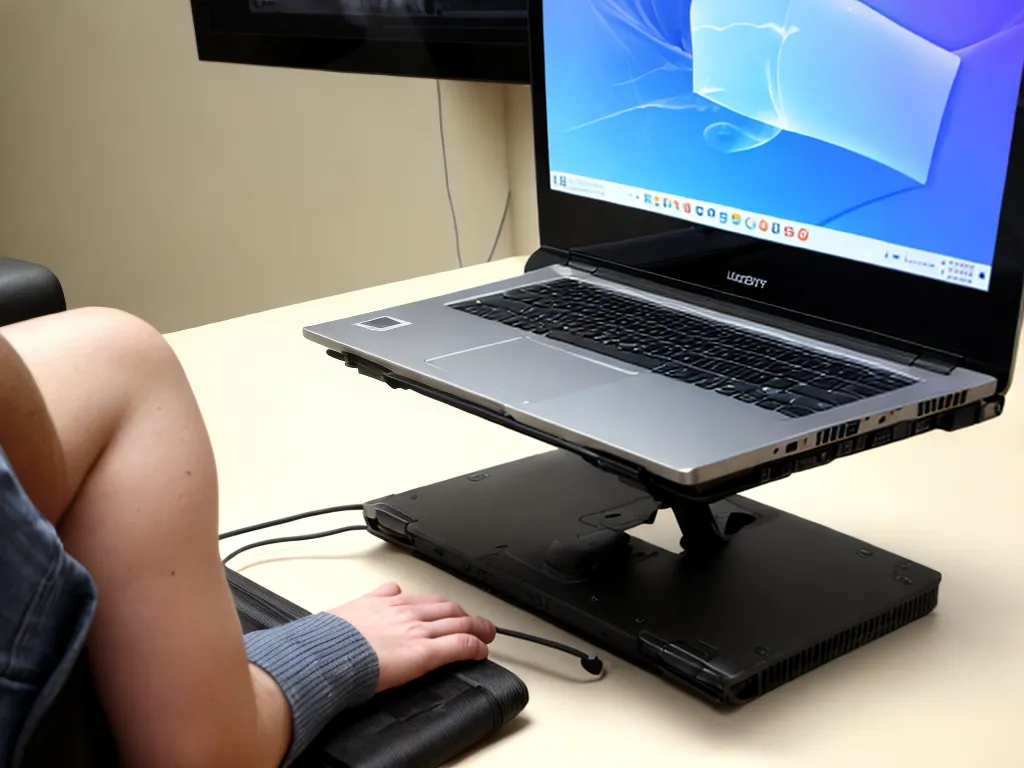
Overheating is a common issue for laptops that can lead to decreased performance, hardware damage, and data loss. Thankfully, there are several ways to fix laptop overheating and keep your device running cooler.
Clean Out Vents and Fans
Dust buildup in your laptop’s vents and fans is a major cause of overheating. Over time, dust accumulates and clogs the vents, preventing proper airflow. Here’s how I clean them out:
- Purchase a can of compressed air. Make sure it’s designed for use on electronics.
- Power off and unplug the laptop. Remove the battery if possible.
- Hold the can upright and spray air through the vents on the bottom, sides, and back of the laptop. This will blow out the dust.
- Use a small vacuum cleaner attachment to suck up any loose dust.
- Carefully clean the laptop’s internal fan using compressed air too. You’ll need to consult your user manual to open up the case.
- Reassemble the laptop and reboot. The fans should run quieter and airflow should improve.
Regularly cleaning the vents and fans helps maximize airflow and prevents overheating. I recommend doing this every 3-6 months depending on use.
Use a Cooling Pad
An external laptop cooling pad can dramatically help lower temperatures. Here’s how they work:
- Cooling pads have built-in fans that blow additional air under and around the laptop. This supplements the laptop’s own fans.
- They raise the laptop up to promote airflow underneath. This allows more heat to dissipate.
- Many include adjustable stands to angle the laptop screen and keyboard for optimal typing position.
To use a cooling pad:
- Place the pad on a flat, steady surface like a desk or table.
- Set your powered-off laptop on top of the pad, making sure the pad’s fans line up with your laptop’s vents.
- Use the pad’s adjustable stands to tilt the laptop if desired.
- Power on the cooling pad, then turn on your laptop.
The additional airflow can lower laptop temperatures by 10-15°C. I recommend continuous use whenever possible. Cooling pads range widely in price, but you can find basic models for under $20.
Manage Tasks and Processes
Background tasks and processes like software updates can tax your laptop’s resources, causing strain and heat buildup. Here are some ways to manage them:
- Close any programs you aren’t actively using. This reduces CPU and RAM usage.
- Pause or delay any non-essential software updates, especially large ones.
- Adjust power settings to “Balanced” or “Power Saver” mode. This reduces energy usage.
- In Windows, open Task Manager and look for any anomalous processes hogging resources. You can right-click and end these tasks.
- Check for and remove bloatware and unnecessary pre-installed software. This reduces resource demands.
Actively managing what’s running in the background helps minimize unnecessary energy usage that contributes to overheating.
Update or Re-apply Thermal Paste
Thermal paste is used to transfer heat from the CPU and GPU to the laptop’s heatsink/cooling system. Over time it can dry out or lose effectiveness. Here’s how to replace it:
- Purchase a tube of fresh thermal paste designed specifically for use in electronics. Arctic Silver and Noctua NT-H1 are top brands.
- Power down and disassemble the laptop enough to access the CPU and GPU chips. Consult a repair guide for your specific model if unsure.
- Carefully scrape off the old, dried paste using an eraser sponge or isopropyl alcohol.
- Apply a small line or pea-sized dot of fresh paste directly onto the CPU and GPU cores.
- Reassemble the laptop. The new paste will spread evenly when the heatsink is replaced.
Replacing old thermal paste with fresh paste improves heat transfer from the chips. This can lower core temperatures by several degrees Celsius. I recommend re-applying paste once every 1-2 years depending on use.
Undervolt the CPU
Undervolting is a process where you supply a lower voltage to the CPU. All CPUs are overvolted from the factory. Supplying a lower stable voltage reduces power consumption, temperatures, and some performance loss from thermal throttling.
Here is how to safely undervolt:
- Research your specific CPU to estimate a stable undervolt value, usually around -100mV.
- In Windows, use the Intel Extreme Tuning Utility or ThrottleStop to configure the undervolt. Apply it at bootup.
- Test for system stability. If crashes occur, raise the undervolt incrementally until stable.
- Monitor temperatures using a tool like Core Temp before and after undervolting.
When tested properly, undervolting is safe and effective. It can reduce operating temperatures while only minimally affecting performance.
Improve Airflow Around the Laptop
Using your laptop on soft surfaces like beds or couches can block airflow through bottom vents leading to overheating. Here are some tips:
- Avoid putting the laptop directly on soft surfaces which can act as insulation. Use a hard surface or place a board underneath.
- Don’t cover or wrap the laptop in any materials that would block airflow.
- Ensure at least 6 inches of clearance around exhaust vents while in use.
- Work in a cool, well-ventilated space rather than an enclosed area.
- Use the laptop on a flat desk or table rather than your lap which also restricts airflow.
Optimizing the laptop’s exposure to free flowing, cool air helps maximize passive airflow and cooling.
Summary
- Regularly clean out dust buildup from internal fans and external vents.
- Use an external cooling pad with supplemental fans.
- Close unused programs and manage background processes.
- Replace old thermal paste on the CPU and GPU for optimal heat transfer.
- Undervolt your CPU for lower temperatures.
- Don’t block airflow and expose the laptop to cool ambient air.
Following one or multiple of these tips can help resolve overheating issues and improve laptop performance and longevity. Overheating typically indicates a buildup of dust and debris, poorly applied thermal paste, or suboptimal operating conditions. With proper maintenance and settings adjustments, most overheating problems can be fixed.












